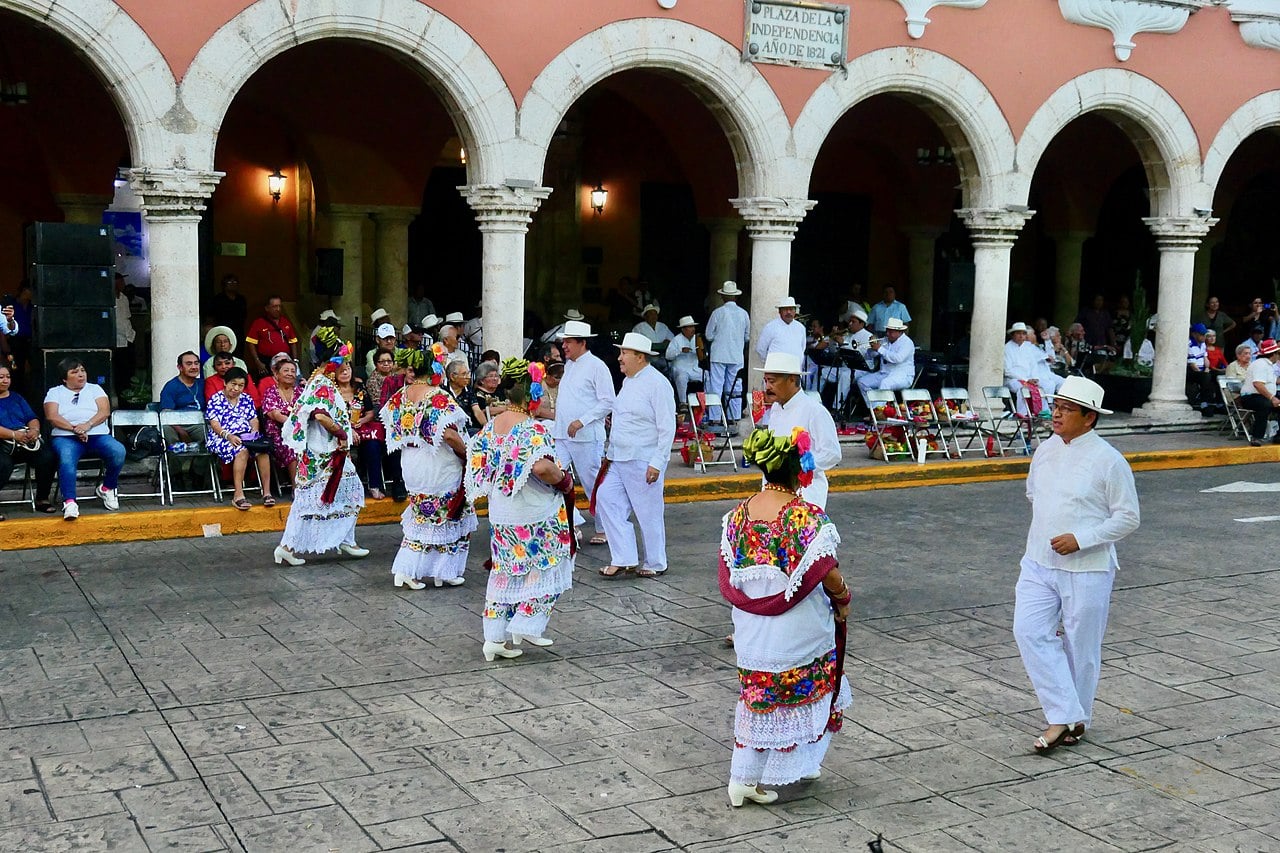
The typical costume of Yucatán has its roots in the history of the famous Mexican peninsula, as it coincides with the traditional clothing of the mestizos in the area. But it also includes items worn by the Spanish such as the holland and chantilly lace and religious jewelry.
In any case, it is a light and fresh suit, how could it be otherwise given the hot weather of Yucatan, whose average annual temperature is around 28 degrees Celsius. But it is also a clothing that reflects the rich tradition of the Yucatecan state. Therefore, if you want to know more about the typical costume of Yucatan, we will start by talking to you a little about his story.
The typical costume of Yucatán as a reflection of the history of the area
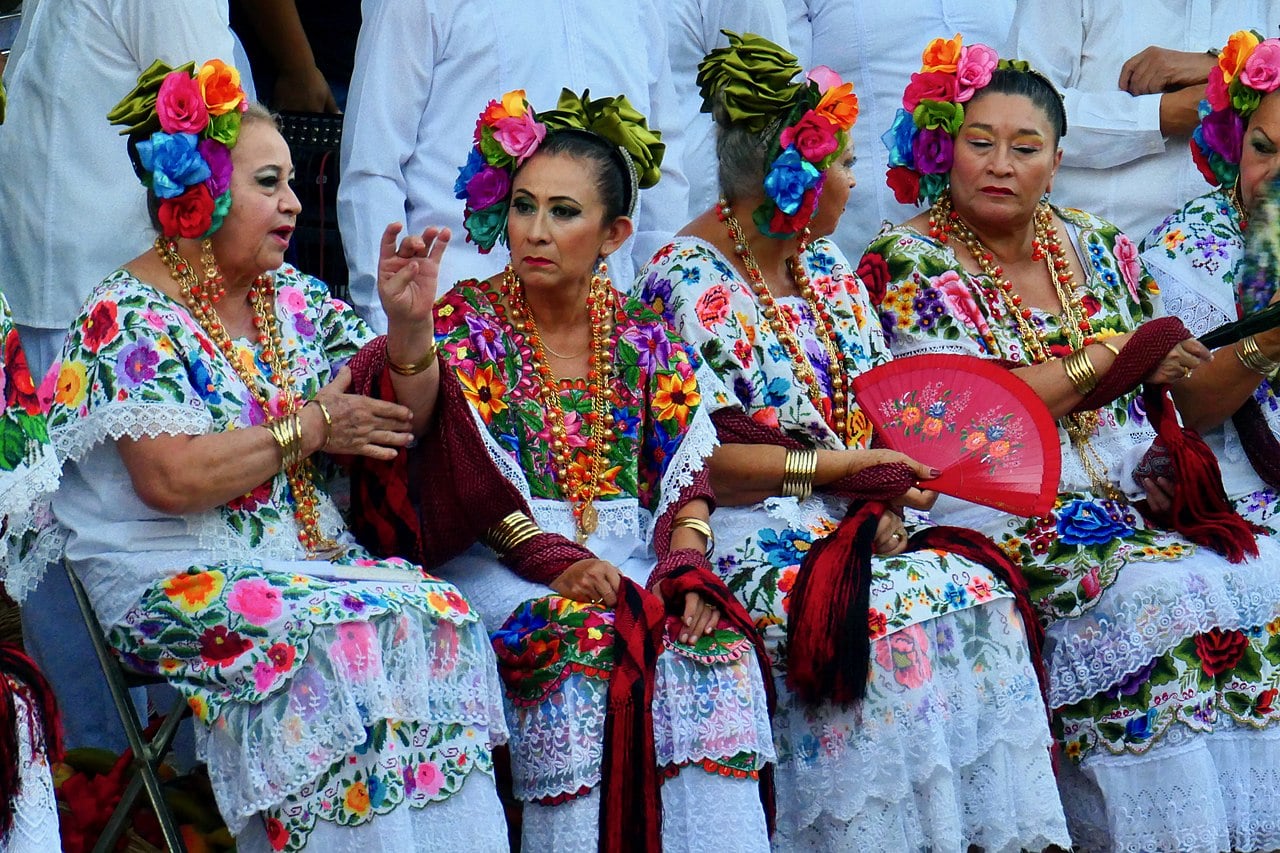
Women wearing their typical Yukatán costumes
Apart, precisely, from its sunny climate, if the Yucatan Peninsula is characterized by something, it is for its rich history. Probably inhabited since the Pleistocene, as shown by the remains found in the Loltín caves, were however the mayans who abundantly populated Yucatán.
In fact, its territory is full of archaeological sites that were ancient cities of that pre-Columbian civilization. Among them, those of chunchucmil, Chichen Itza, Oxkintok o Acanceh, with its famous Pyramid of the Dying Deer. In any case, if you want to know more about the city, be sure to find out about the many wonders what can you see in Yucatan.
With the advent of the Spanish and their customs, the Catholic religion and the new European court dresses also arrived in the area, all of which has influenced the typical costume of Yucatan, as we told you before.
This clothing would be worn in the large estates in the area, many of which can still be seen today. Among these, those of Saint Anthony Sodzil, Xtepen, Uayalceh or the even more spectacular of Temozón.
Already in modern times, the typical costume of Yucatan, as it happened in many other places, became an element of the regional folklore that is used in festivities and commemorations. But it will be more interesting to know what the Yucatecan costume is like.
What is the typical costume of Yucatan
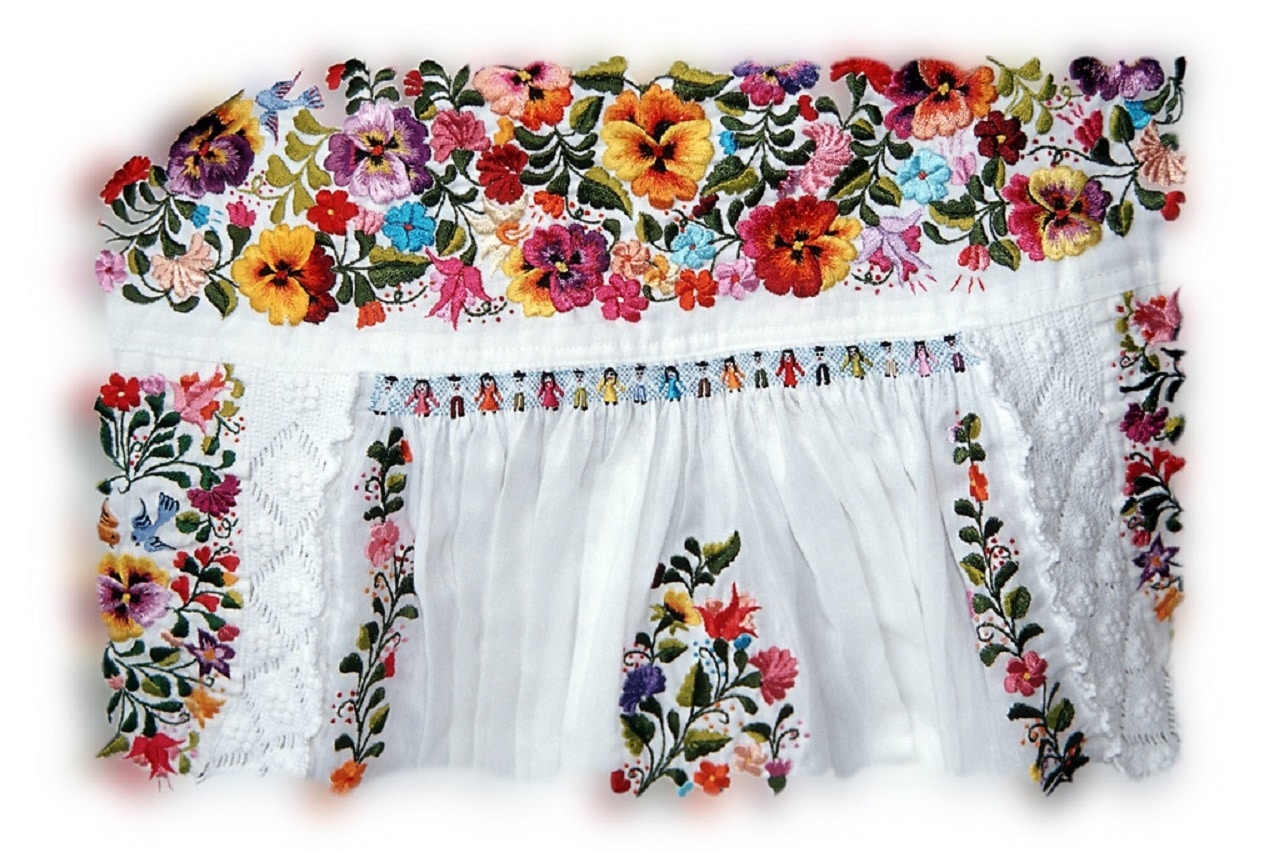
huipil
To explain the characteristics of traditional Yucatan clothing, we must differentiate men's and women's clothing. But first, we have to talk to you about an essential garment in these Yucatecan costumes and even in those of other Mexican states such as Puebla o Querétaro. We refer to huipil.
The huipil or hipil
As we told you before, this kind of blouse or dress adorned with bright colors is a reflection of the history of the area. Upon the arrival of the Spanish, Mayan women used to wear a naked torso. As those thought that it was against morality, they sought to cover them with a garment that was already used in other parts of Mexico and that was known by the Nahuatl word Huipilli, from which it happened to güipil or hipil.
It was acquiring so much popularity over the centuries that, currently, the typical Yucatan costume for women is called hipil, although it not only includes this, but also other garments. That is, it takes this traditional dress as a base and adds other pieces.
The hipil, therefore, is a white dress which has the same dimension above and below. It is sewn on the sides and leaves two openings for the arms, while that of the head is rectangular and has borders around it. On white fabric, both the neckline, the sleeves and the bottom have embroidery of great color. But, as we told you, the typical female costume of this area of Mexico carries more clothes.
Yukatán typical costume for women
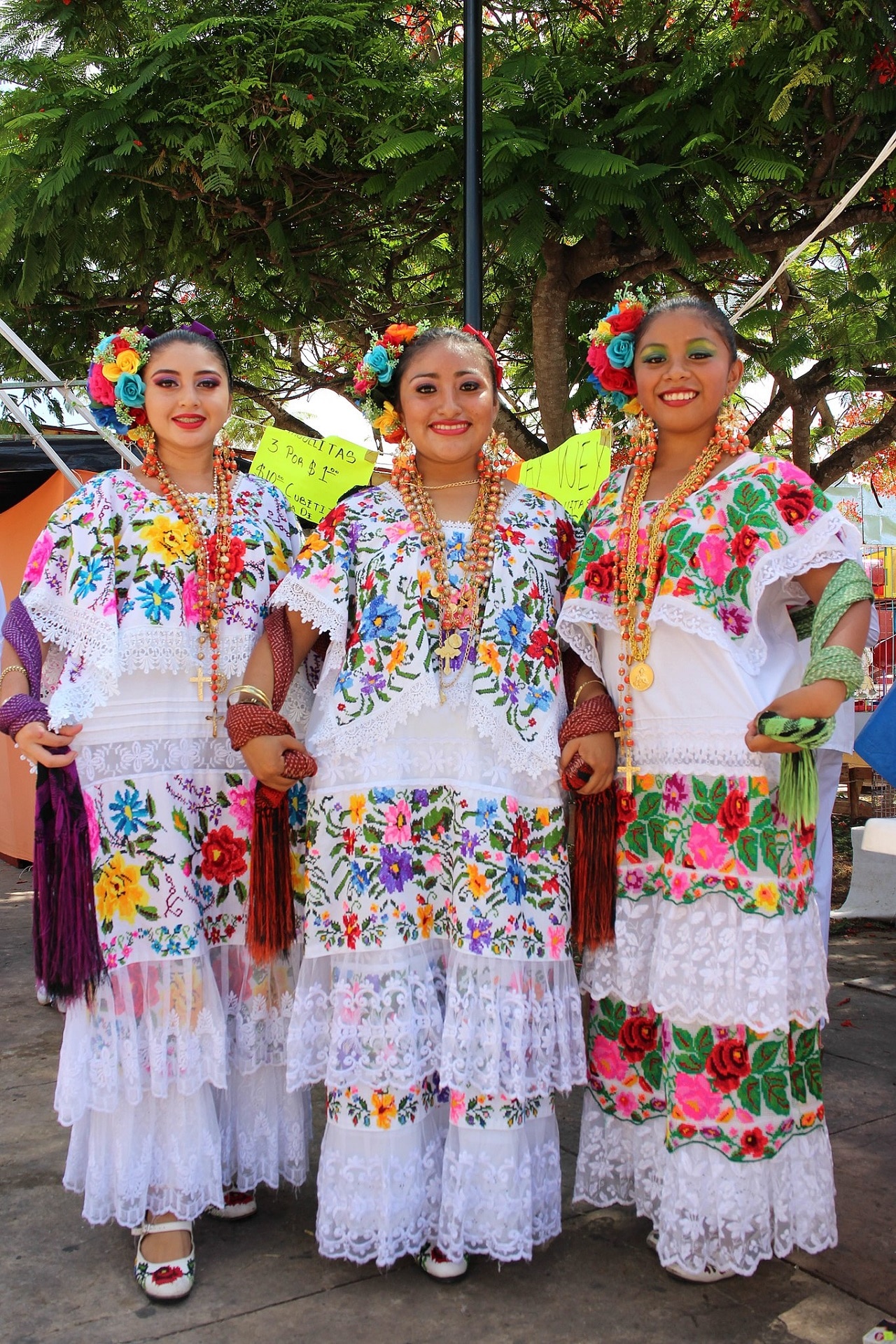
Yukatán typical costume for women
On the basis of the hipil, the woman who wears traditional Yukatec clothing can wear a fine doublet square with sleeves that leave the arms bare. This is also adorned, on the neck, with exquisite borders with embroidery cross stitch, silk in the English style and even with oil miniatures.
On the other hand, under the hipil, the Yukatecan woman wears a fustan or petticoat that stands out and that is ornamented with the same borders as that one. To complement the set, different ornaments are placed on this clothing that deserve to be commented on.
Mainly, they are long and luxurious rosaries that combine gold filigree and coral beads and are carved by the main jewelers of Yukatán. Likewise, different attachments hang from them. For example, gold coins that are called shields, just like the old ones from Spain. And also precious filigree crosses also made by Yukatecan artists.
As for the hairstyle, the so-called t'utch. It consists of gathering the hair back in the shape of a hammer and held by a ribbon bow. Some women add pompadour with graceful curls. Finally, in the ears they carry large and long earrings made of gold filigree with colored stones. Normally, they match the rosaries around their necks.
The typical Yukatán costume for men

Yukatán typical costumes for men and women
Traditional clothing for men in Yukatán is much simpler. To save combination with the feminine, it is also white, both his pants and his upper part. The first is made of canvas or denim and ends in a wide bell mouth. Also, it gets starched and ironed.
For its part, the shirt is long and made of fabric. It is also ironed with care and has gold buttons that hang from a chain that joins them inside the garment. However, nowadays, this model is often changed to the classic guayabera of Cuban origin.
As for footwear, they are leather espadrilles They are attached to the ankle with a varnished and stitched strap and have a leather sole. Finally, they also carry a Panama straw hat.
However, the classic work suit is somewhat different. It consists of strong canvas trousers, a cotton t-shirt and a blue or striped cotton apron made of thick canvas, also made of canvas.
Having seen the elements of the typical Yukatán costume for both sexes, you will also be interested in knowing when it is used, that is, on what dates you can see the Yukatecs wearing it with pride.
When is the typical costume of Yukatán used
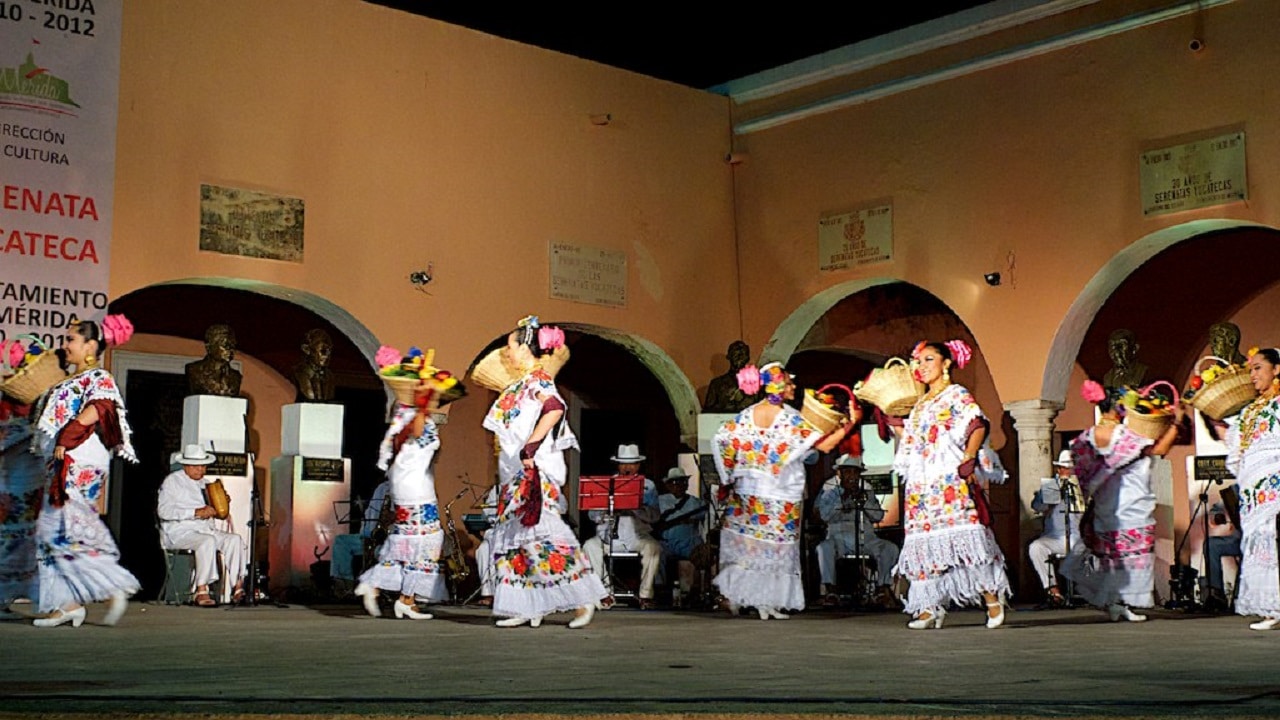
Yukateca Jarana
Because, as is logical and happens in all parts of the world, typical clothing is only used in large folk events or designated festivities. It is then when the inhabitants of the state take the opportunity to recover their typical costume and wear it for natives and visitors. It is also the time when, dressed in their traditional clothing, men and women dance the jarana, the typical dance of the state.
Some of these parties are those of Saint Agnes in Dzitas, La Candelaria in Valladolid, Saint Anthony of Padua in Tinum, the Holy Christ of the Blisters in Mérida or Our Lady of Izamal in the homonymous locality.
Equally very important is the role of the typical costume during the celebrations of the Virgin of Guadalupe, which, as you know, is the patron saint of all Mexico. In all these celebrations, the traditional clothing of Yukatán has great importance in an activity.
The dairy and the jarana
We are talking about the vaquería, a Yukatecan tradition that dates back to colonial times. At that time, the Spaniards who had cattle ranches gathered their workers to carry out "The iron", which was nothing other than the marking of cattle.
Accompanying this work, dances and other festive events were held. For the latter, the participants wore their most elegant clothes. Today, these events are recreated as a mere recreational activity and the typical costume of Yukatán is very present, especially in dances.
The latter, as we said, also have an indisputable protagonist: the jarana. It is the typical dance of the area and receives that name because, when it began, it used to be said «The jarana has already started». In any case, it is in those moments when the traditional Yukatec clothing becomes relevant.
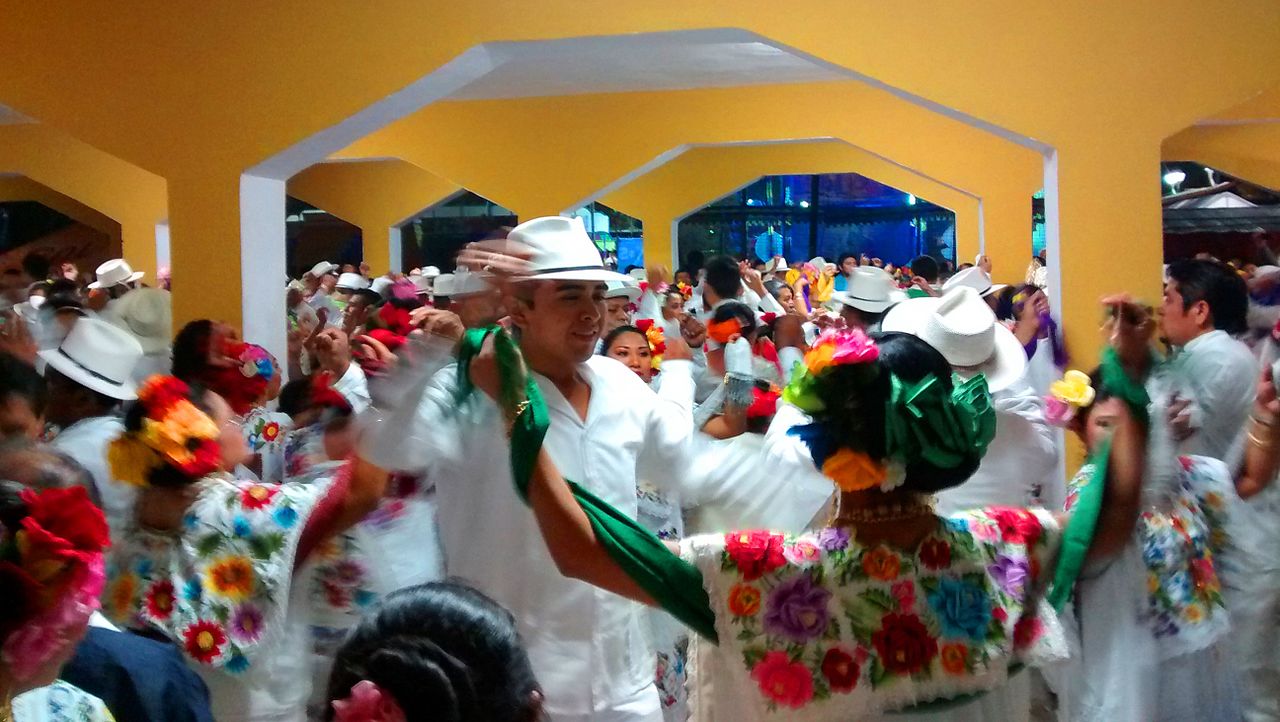
Celebration of a dairy farm in Acanceh
It is said that the origin of this dance is in the Aragonese jota, whose rhythms and modes it still reflects today. But it also includes mayan elements. In this sense, we could tell you that it is a fusion dance between the native and the colonial.
To represent it, the dancers, men and women dressed in a traditional way, keep their trunks upright while moving their legs to the rhythm of the music. This position allows you to develop one of the most typical components of the jarana: dance with an object on your head. In fact, the most seasoned dancers perform it with a full bottle and even a tray of glasses without dropping them.
On the other hand, the musicians, who also wear the typical costume of Yukatán, are called charanga. It is basically made up of two trumpets, a trombone, two clarinets, a double bass, a saxophone, two timpani and a güiro. The latter is a percussion instrument made with dried gourd that is also used in traditional Cuban music and other Latin American countries. These brass bands are almost as popular in Mexico as the mariachis, Mexican musical groups that deserve to be known in depth and of which we have already spoken on the blog.
In conclusion, we have shown you the Yukatán typical costume and also the moments is that it is used. Without a doubt, it is one of the most important elements of Yukatec folklore and it is a pleasure to see it with its white tones and golden rhinestones.